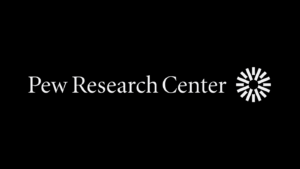
Pew Research Center Analysis:
- Introduction
- Overview of Pew Research Center
- Importance in today’s information landscape
- History of Pew Research Center
- Founding and evolution
- Key milestones
- The Mission and Vision of Pew Research Center
- Core objectives
- Impact on public opinion and policy
- Research Areas and Methodologies
- Overview of research topics
- Explanation of methodologies
- Political Polling and Analysis
- Techniques and reliability
- Influence on political discourse
- Social and Demographic Trends
- Key findings and insights
- Impact on social policies
- Global Attitudes and Trends
- International research scope
- Contributions to global understanding
- Pew Research Center in the Digital Age
- Adapting to new technologies
- Online data collection and analysis
- Challenges and Criticisms
- Addressing biases and inaccuracies
- Maintaining credibility
- Future Directions and Innovations
- Emerging research areas
- Technological advancements
- Pew Research Center’s Role in Education
- Resources for students and educators
- Enhancing public knowledge
- Comparing Pew Research Center with Other Think Tanks
- Unique features and strengths
- Collaborations and differences
- How to Access and Utilize Pew Research Data
- Guide for accessing reports and data
- Tips for interpretation
- The Impact of Pew Research on Public Policy
- Case studies and examples
- Influence on policy-making
- Conclusion
- Summary of Pew Research Center’s significance
- Final thoughts
The Article
Understanding the Pew Research Center: A Beacon in the Information Age
Introduction The Pew Research Center stands as a pivotal institution in our modern information landscape, renowned for its unbiased, factual, and comprehensive research. This article delves into the history, mission, and impact of this influential organization, offering insights into how it shapes public opinion and policy.
History of Pew Research Center Founded in 2004, the Pew Research Center has evolved significantly. From its inception as a nonpartisan fact tank, it has reached key milestones, becoming a trusted source of information on social issues, politics, and demographic trends.
The Mission and Vision of Pew Research Center At its core, the Pew Research Center aims to inform the public about the issues, attitudes, and trends shaping the world. It stands as a guardian of public opinion, influencing policy and societal norms through its rigorous research.
Research Areas and Methodologies The Center covers a wide array of topics, from political polling to social trends, using methodologies that ensure accuracy and reliability. This section explores the diverse research areas and the techniques employed to gather data.
Political Polling and Analysis Pew’s political polling is renowned for its precision and depth. This part examines the methodologies used and their influence on political discourse and decision-making.
Social and Demographic Trends
Social and Demographic Trends The Center’s research on social and demographic trends offers invaluable insights into the fabric of society. This section highlights key findings and their implications for social policies.
Global Attitudes and Trends Pew’s international research provides a unique perspective on global attitudes and trends. This section discusses the scope and contributions of its global research.
Pew Research Center in the Digital Age In the digital era, Pew has adapted to new technologies, embracing online data collection and analysis. This section explores the challenges and innovations in digital research.
Challenges:
Challenges and Criticisms No institution is without its challenges. This part addresses the criticisms faced by Pew, particularly regarding biases and maintaining credibility in a rapidly changing information landscape.
Future Directions and Innovations Looking ahead, the Pew Research Center is poised to explore new research areas and embrace technological advancements. This section speculates on future directions and potential innovations.
Pew Research Center’s Role in Education The Center is not just a research institution; it’s also a valuable educational resource. This part discusses its contributions to enhancing public knowledge and resources available for students and educators.
Comparing Pew Research Center with Other Think Tanks How does Pew stand out among other think tanks? This section compares its unique features, strengths, and collaborations with other institutions.
How to Access and Utilize Pew Research Data For those interested in Pew’s data, this part offers a guide on how to access and interpret its vast array of reports and data.
The Impact of Pew Research on Public Policy Pew’s influence extends to public policy. This section provides case studies and examples of how its research has influenced policy-making.
Conclusion The article concludes by summarizing the significant role of the Pew Research Center in shaping public opinion and policy, emphasizing its importance in our information-driven world.
FAQs
- What is the primary mission of the Pew Research Center?
- How does Pew Research Center ensure the accuracy of its data?
- Can the public access Pew Research Center’s data and reports?
- How does Pew Research Center compare to other think tanks?
- What impact has Pew Research Center had on public policy?
